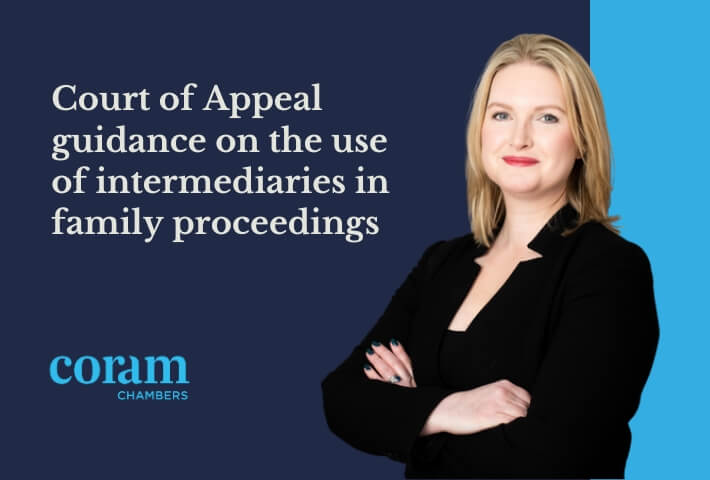Georgina Rushworth, specialist in financial disputes on divorce, considers the background to the Divorce, Dissolution and Separation Act 2020 Act (DDSA 2020) and the headlines worth noting ahead of its commencement this week
In the first of series of blogs, which we will be publishing leading up to the coming into force of the Divorce, Dissolution and Separation Act 2020 Act (DDSA 2020) and subsequently, Georgina Rushworth, considers the background to the 2020 Act and the main headlines, ahead of its commencement on Wednesday.
In The Divorce Trap: Life After Owens v Owens, Georgina considered the implications of the then hotly anticipated decision of the Supreme Court in Owens v Owens [2018] UKSC 41. Four years on, it is little surprise that we are all very ready for change.
Mr and Mrs Owens were aged 80 and 68 respectively. Mrs Owens had first consulted solicitors about a divorce, in June 2012. In December 2012, Mrs Owens delivered a draft petition to Mr Owens but that was not pursued. In February 2015, Mrs Owens left the family home and in May 2015, Mrs Owens filed the petition, which was the subject of the proceedings, seeking a divorce under section 1(2)(b) of the MCA 1973. The final hearing came before His Honour Judge Tolson QC who concluded that whilst it was clear and he found as a fact, that the marriage had irretrievably broken down, he found no behaviour such that she could not reasonably be expected to live with him. Mrs Owens appealed. On 24 March 2017, the Court of Appeal, rejected the appeal, albeit one might glean their reticence from the judgement given by Lady Justice Hallett, who recorded that she reached that conclusion, “(w)ith no enthusiasm whatsoever” [para 99]. Mrs Owens appealed to the Supreme Court. The lead judgment given by Lord Wilson concluded with the Court’s express recognition that in dismissing the appeal, the effect was that Mrs Owens must remain trapped in a marriage, which she wished were at an end and with a clear invitation to Parliament to consider reforming a law which was no longer fit for purpose [paras 44 – 45].
Whilst the outcome was met with disappointment in virtually all quarters, the decision was valuable, sending a clear message that the commonplace, shorthand phrase “unreasonable behaviour” must be forgotten. So too, the notion of “fault-based divorce.”
This was not new. Attempts had been made to remove the concept of fault for decades. Whilst, the Matrimonial Causes Act 1937 had simplified many of the more antiquated concepts, efforts to introduce “separation” as a ground were attempted both in the 1950s and in the 1960s, the decade which saw the notorious Argyll divorce. These efforts resulted, in the Divorce Reform Act 1969, which introduced the option of no fault divorce based on over two years separation, consolidated finally in the Matrimonial Causes Act 1973, as modified by the Matrimonial Family Proceedings Act 1984, and implemented by the Family Procedure Rules 2010.
On the 25 July 2018, the same date that the Supreme Court delivered judgment in Owens, the Ministry of Justice twitter account, tweeted as follows:
“Responding to Owens versus Owens @UKSupremeCourt judgment: The current system of divorce creates unnecessary antagonism in an already difficult situation. We are already looking closely at possible reforms to the system.”
In June 2020, the Divorce, Dissolution and Separation Bill, previously stalled twice, cleared its final parliamentary hurdles.
The 6 April 2022 is the date when the DDSA 2020 will come into force implemented by a number of changes to the current Part 6 and Part 7 of the FPR, undertaken by the Family Procedure Rule Committee, as well as wider amendments to the other parts of the FPR, still under wraps.
Ultimately, fault based divorce will be removed from the statute to be replaced by what has been hailed to be a smooth system and “no fault” divorce.
The headlines are as follows:
- The 2020 Act abolishes fault from the legal process for divorce, dissolution and separation;
- The sole ground remains irretrievable breakdown, proved by making a statement to that effect and at least a 26 week wait (in practice, the period is likely to be longer);
- There is the opportunity to make a joint application;
- There is no defence and only very limited grounds for dispute;
- Service will be streamlined;
- There will be guidance on costs.
Justice Secretary, Sir Robert Buckland has said that the new laws are designed to “stop divorcing couples having to make unnecessary allegations against one another and instead help them focus on separating amicably”.
At first glance, has that aim been achieved?
Arguably, the new regime will avoid the damaging charade, which surrounded the Argylls and the Owens’, however, the appropriateness of a slick system to deal with a matter as delicate as divorce, may be called into question and is likely to operate not without issue.
Resolution anticipates the change will encourage cooperation. Only time will tell whether that is a realistic aspiration or a utopian ideal.


